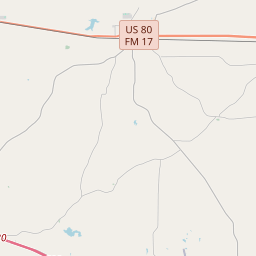Mineola Fire Department
Historical marker location:






In the 1870s, the Texas & Pacific and International & Great Northern railroads built lines through this area, with the town of Mineola serving as the eventual juncture of the two. Fire was one of many challenges faced by early local inhabitants of the new town; on a single night in the 1880s, a reported eighteen downtown buildings burned, including houses, businesses and a Masonic temple. Residents built new brick structures, but the threat of fire remained.
In 1906, officials installed a fire gong at the city well to use as an alarm, and the city council began discussing the formation of a hook and ladder company. The next year, several men organized the Mineola Fire Company, a volunteer group with no connection to the city government, which received its first firefighting equipment in 1908. The volunteer company continued to grow over the next several years, adding chemical and hose trucks, and developing membership requirements.
The city adopted the fire company as an official department in 1924 and purchased an American La France fire engine. Between that year and 1928, the city experienced several disastrous fires, including one in 1926 that required assistance from Tyler and Winnsboro firefighters. R.D. Adrian received the contract to build a fire station, completed in 1932. It provided fire equipment storage space, a meeting room and a jail.
By the mid-1940s, the city paid insurance on all firemen, who remained volunteers. In 1954, the city hired its first paid firefighters. Ten years later, the department began holding annual rodeos for the community. Over the past several decades, the city has expanded the department and sent its workers to training in firefighting and other emergency and rescue procedures.
(2005)
As one of the most visible programs of the Texas Historical Commission (THC), historical markers commemorate diverse topics in Texas history, including: the history and architecture of houses, commercial and public buildings, religious congregations, and military sites; events that changed the course of local and state history; and individuals who have made lasting contributions to the state, community organizations, and businesses.
Texas has been a major oil-producing state for over a century. The first big oil discovery in Texas was the Spindletop field near Beaumont in 1901, which set off a massive oil boom that transformed the state's economy and made Texas one of the wealthiest states in the country.
In the early 1800s, the region attracted settlers from the United States who were drawn to the lush forests and abundant resources. The first permanent European-American settlement was established in 1846, and it was named Quitman after John A. Quitman, a prominent politician of that time.
During the Civil War, Wood County played a significant role in supporting the Confederacy. Many residents enlisted in the Confederate Army, and the area became a center for military recruitment and training. After the war, the county suffered economically, but with the introduction of the railroad in the late 19th century, the economy began to recover.
Wood County's economy primarily relied on agriculture, with the growth of cotton, corn, and timber industries. The establishment of sawmills and the development of the timber industry brought prosperity to the area. In the early 20th century, the discovery of oil and gas reserves further fueled the county's economic development.
Today, Wood County continues to be an important agricultural and industrial center in Texas. The county's history is evident in its charming small towns, historic sites, and natural beauty. The strong sense of community and appreciation for the region's heritage are still evident today, making Wood County a vibrant and inviting place to visit or live.
Wood County Timeline
This timeline provides a glimpse into the major events and milestones that have shaped the history of Wood County, Texas.
- 1850: Wood County is established by the Texas legislature.
- 1852: The first courthouse in Wood County is built in Quitman.
- 1860: The population of Wood County reaches 4,867.
- 1875: The railroad reaches Wood County, boosting economic growth.
- 1895: The county seat is moved from Quitman to Mineola.
- 1920: The population of Wood County peaks at 19,109.
- 1930: The Great Depression hits Wood County, causing economic hardship.
- 1958: Lake Holbrook is completed, providing a recreational area for residents.
- 1970: Wood County's population decreases to 12,230.
- 1983: Holly Lake Ranch, a gated residential community, is established in Wood County.
- 2000: The population of Wood County surpasses 37,000.
- 2019: Wood County experiences steady growth and continues to be a thriving community.